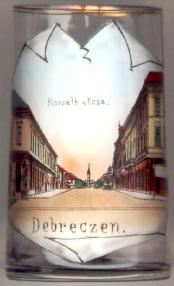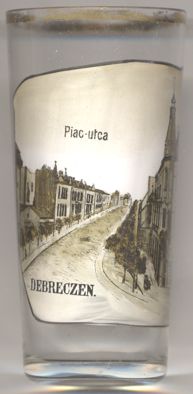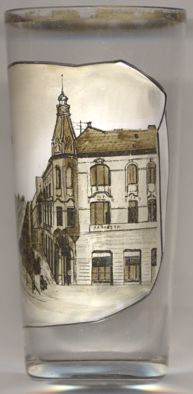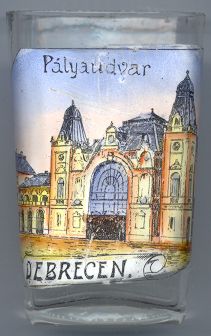

|
| MAGYARORSZÁG | HUNGARY |
| megye: Hajdú-Bihar |
 During the Middle Ages Debrecen developed out of several smaller villages
and became a trading place for cattle and agricultural products. It obtained
the freedom of the city in 1361. During the times of the Reformation, Debreces
became a centre of Calvinism. Even during the occupation by the Turks, which began in 1555,
the inhabitants were allowed to practice their faith. When the Habsburgs liberated
Debrecen from the Turks in the 17th century they tried to introduce the Counter-Reformation
but the majority of the population remained Protestant.
During the revolution of 1848 Debrecen was the centre of the struggle for
independence under Lajos Kossuth.
During World War II Debrecen was the
capital of the liberated parts of the country from December 1944 until March 1945.
During the Middle Ages Debrecen developed out of several smaller villages
and became a trading place for cattle and agricultural products. It obtained
the freedom of the city in 1361. During the times of the Reformation, Debreces
became a centre of Calvinism. Even during the occupation by the Turks, which began in 1555,
the inhabitants were allowed to practice their faith. When the Habsburgs liberated
Debrecen from the Turks in the 17th century they tried to introduce the Counter-Reformation
but the majority of the population remained Protestant.
During the revolution of 1848 Debrecen was the centre of the struggle for
independence under Lajos Kossuth.
During World War II Debrecen was the
capital of the liberated parts of the country from December 1944 until March 1945.
The street shown on glass no. 468 [left] is  Kossuth
Kossuth
The church shown in the background of glass no. 468 [left] is the so-called
 Red
Red


 Piac utca (Market Street) [near left, no. 0000] is one of the main streets of Debrecen.
It got its name from the daily and weekly markets that was held in front of the Great Church. Before that, it hadbeen called Várad Street.
After world War II it was named Red Army Street, but was renamed Piac utca in 1990.
Piac utca (Market Street) [near left, no. 0000] is one of the main streets of Debrecen.
It got its name from the daily and weekly markets that was held in front of the Great Church. Before that, it hadbeen called Várad Street.
After world War II it was named Red Army Street, but was renamed Piac utca in 1990.
[https://hu.wikipedia.org/wiki/Piac_utca]

The picture on glass no. 1925 [near left] shows the old  railway
railway
[https://hu.wikipedia.org/wiki/Debrecen_vas%C3%BAt%C3%A1llom%C3%A1s]
![[scale]](lineal.jpg)